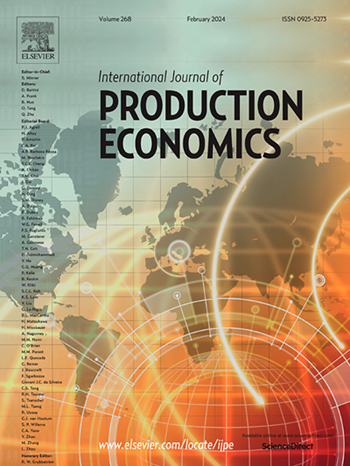通过再制造构建循环供应链的推动因素和障碍——Grey DEMATEL方法
IF 10
1区 工程技术
Q1 ENGINEERING, INDUSTRIAL
引用次数: 0
摘要
循环供应链(CSCs)是循环经济(CE)的基石之一,因为关闭材料循环有助于回收价值和提高资源效率。本研究的目的是确定通过再制造从线性供应链向循环供应链过渡的主要推动因素和障碍。我们专注于电气和电子设备(EEE),因为根据欧盟委员会的指导方针,该部门具有很高的循环潜力,因此是CSC实施的优先领域之一。尽管再制造在供应链中保持价值的潜力很大,但大多数CSC研究都集中在回收上。为了填补这一空白,我们调查了与立法、收集系统(回收)、技术、经济、产品和客户相关的六组因素的影响。由于先前的研究表明了因素类别之间的相互关系,我们采用灵活的多标准灰色DEMATEL(决策实验和评估实验室)来有效地识别关键的促成因素和障碍。这项探索性研究的新颖性源于对再制造的关注,这在CSC研究的背景下代表性不足,并通过应用灰色DEMATEL,提供可操作的决策支持,以优先考虑相关因素,特别关注那些促成因素和障碍因素。结果确定了12个促成因素,其中最具影响力的是“维修权”的引入,电子电气设备生产商采用新的基于服务的商业模式,以及对二次材料的需求不断增长,这为更循环的方法提供了动力。结果揭示了七个障碍,其中最具影响力的是启动再制造的财务和组织业务需求以及合格员工的低可用性。本研究具有实际意义,因为它为从行业主导的回收到更循环的价值保留实践(如再制造)的转变提供了灵活有效的决策支持。本文章由计算机程序翻译,如有差异,请以英文原文为准。
Enablers and barriers in building the circular supply chain through remanufacturing - Grey DEMATEL approach
Circular supply chains (CSCs) are one of the cornerstones of the circular economy (CE), as closing the material loop helps to recover value and improve resource-efficiency. The purpose of the study is to identify the main enablers and barriers in the transition from a linear supply chain to a circular supply chain through remanufacturing. We focus on electrical and electronic equipment (EEE), as, according to the European Commission guidelines, this sector has a high potential for circularity and is therefore one of the priority areas for a CSC implementation. Despite the high potential of remanufacturing to retain value in a supply chain, most CSC studies are centred on recycling. To fill this gap, we investigate the impact of six groups of factors related to legislation, collection system (take-back), technology, economics, products, and customers. As previous studies have shown interrelationships between factor categories, we employ a flexible multi-criteria grey DEMATEL (Decision Experimentation and Evaluation Laboratory) to effectively identify key enablers and barriers. The novelty of this exploratory research results from the focus on remanufacturing, which is under-represented in the context of CSC research, and the provision of actionable decision support to prioritise interrelated factors, with a particular focus on those that are enablers and barriers, through the application of a Grey DEMATEL. The results identify 12 enablers, among which the most influential are the introduction of ‘Right to Repair’, the application of a new service-based business model of EEE producers, and the increasing demand for secondary materials that provide an impulse to a more circular approach. The results reveal seven barriers, the most influential of which are the financial and organisational business requirements to initiate remanufacturing and the low availability of qualified staff. This research has practical implications, as it provides flexible and effective decision-making support for the transition from industry-dominant recycling to more circular value retention practices such as remanufacturing.
求助全文
通过发布文献求助,成功后即可免费获取论文全文。
去求助
来源期刊
CiteScore
21.40
自引率
7.50%
发文量
266
审稿时长
52 days
期刊介绍:
The International Journal of Production Economics focuses on the interface between engineering and management. It covers all aspects of manufacturing and process industries, as well as production in general. The journal is interdisciplinary, considering activities throughout the product life cycle and material flow cycle. It aims to disseminate knowledge for improving industrial practice and strengthening the theoretical base for decision making. The journal serves as a forum for exchanging ideas and presenting new developments in theory and application, combining academic standards with practical value for industrial applications.

 求助内容:
求助内容: 应助结果提醒方式:
应助结果提醒方式:


